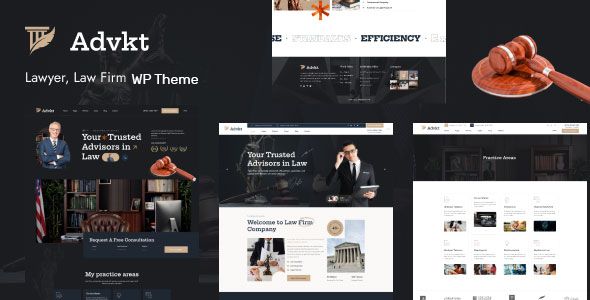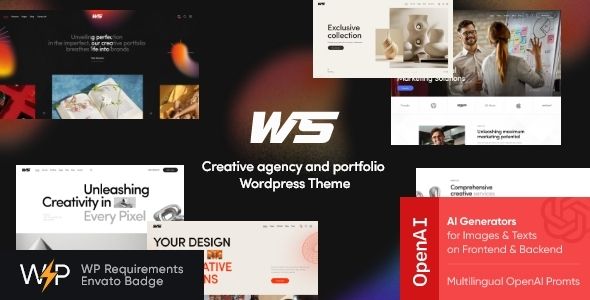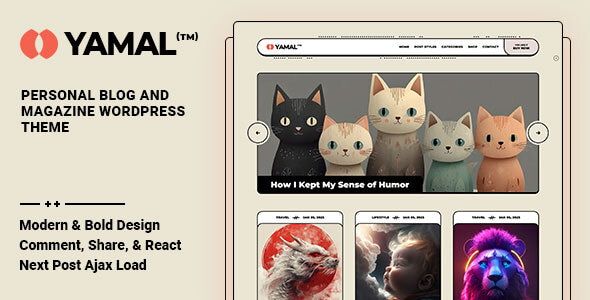Choose Your Desired Option(s)
×
- Description
- Reviews
- FAQ

This release of Fashi WP – Multipurpose Fashion WooCommerce WordPress Theme puts control back in your hands. You get the complete professional theme with the full feature set, the visual polish, and the editing comfort merchants expect—yet without domain locks, seat counts, or nagging activations. Install it on unlimited sites (brand flagships, seasonal microsites, outlet stores, lookbook landers, staging sandboxes), pay once, and keep update parity with the official feature evolution. For agencies and in-house eCommerce teams alike, the result is predictable budgeting, faster iterations, and freedom to prototype new storefronts whenever inspiration strikes.
✅ Product Description
Fashi WP – Multipurpose Fashion WooCommerce WordPress Theme is designed for modern fashion retail: apparel, footwear, accessories, jewelry, beauty, and lifestyle blends that rely on imagery, tactile details, and frictionless checkout. It balances runway-grade aesthetics with pragmatic store mechanics. Catalog grids look editorial without sacrificing scannability; product pages highlight fabric, fit, and finish; cart and checkout are tuned to minimize hesitation. The theme’s component library—heroes, lookbook sections, story cards, carousels, collection banners, and editorial blocks—lets non-developers assemble pages that feel custom, quickly.
The homepage is a narrative. Above the fold, you’ll choose between a full-bleed hero with seasonal creative, a split layout showing womenswear and menswear, or a staggered collage that hints at categories and trends. Below, Fashi WP – Multipurpose Fashion WooCommerce WordPress Theme uses modular sections: “New Arrivals,” “Editor’s Picks,” “Bestsellers,” “The Fabric Story,” “Fit Guide,” “Sustainability,” and “On Sale.” CTAs are sparse and elegant—“Shop New,” “Explore Denim,” “Discover Jewelry”—allowing the imagery to speak while guiding shoppers decisively.
Category (archive) pages are conversion engines, not mere lists. Faceted filters (size, color, material, price, fit, length, heel height, sleeve, rise) are accessible and mobile-friendly. You can switch between balanced masonry and strict rows depending on product photography. Quick-add tiles reduce extra clicks for known buyers, while “View Details” stays visible for research shoppers. Sticky filter and sort bars keep context as visitors scroll; infinite scroll or numbered pagination can be toggled per collection.
On product detail pages, the theme frames fabric and fit as first-class citizens. Galleries support zoom, alt angles, video clips, and model spins. A Fit & Sizing block explains measurements in human terms; a Care block clarifies washing and fabric handling; and a Materials block handles composition, certifications, and sourcing. For footwear, you’ll expose EU/US/UK sizing matrices and a “True to size” pulse; for denim, you can show rise, stretch, and weight; for jewelry, chain lengths and closures. Cross-sell strips are polite and relevant: complete the look, colorway variants, and complementary categories (e.g., belts with denim, care kits with leather).
Checkout flows matter. Fashi WP – Multipurpose Fashion WooCommerce WordPress Theme conforms to WooCommerce’s best-practice steps while trimming visual noise. Address autocomplete, guest checkout, and wallet buttons (when enabled in your payments stack) remain uncluttered. Cart micro-copy nudges without hard sell: delivery windows, free-shipping thresholds, returns policy, and duty notes. Empty cart and empty state templates are designed—not afterthoughts—so they reflect the brand voice.
The editorial side drives discovery and retention. A Journal/Stories template gives merchandisers a canvas for trend edits, interviews, behind-the-scenes, fabric diaries, care guides, and gift lists. Each story can pull live products into shoppable carousels or pin them inline as “story chips,” turning content into commerce naturally. For big moments—Black Friday, Singles’ Day, Eid, Diwali, Summer Sale—you’ll spin up campaign landing pages with a hero, countdown (optional), segment cards, curated grids, and promotion T&Cs.
Because this package is license-friendly, teams that operate multiple stores—regional domains, outlet/off-price, collab capsules—can standardize the design system across all sites. Designers reuse a single component library; developers avoid activation hurdles on staging; marketers replicate what already converts.
Key Features (crafted for fashion eCommerce)
1) Collection-first layouts
Home heroes, editorial banners, curated grids, and lookbook modules help you frame seasonal narratives without drowning product discovery. Each block supports headlines, kicker copy, CTAs, and optional badges (new, limited, pre-order).
2) Gallery & media treatments that sell texture
Support for zoom, hover swap, video, 360° spins, and image sequencing. Cropping logic keeps rows tidy while still honoring creative direction.
3) Variant clarity and size confidence
Size and color swatches are large enough for thumbs; “out of stock” states are explicit. Optional fit helpers (notes, charts, and model dimensions) lower returns from uncertainty.
4) Clean filters and sort
Faceted filtering with accessible keyboard navigation. Sort options include newest, price, popularity, and editorial order. On mobile, filters slide over the grid with persistent “Apply” so users don’t lose context.
5) Cross-sell with restraint
“Complete the look” and “Wear it with” sections appear where they make sense, not everywhere. Relevance is prioritized over volume to keep AOV healthy without hampering performance.
6) Story-to-shop integration
Journal templates can drop live product modules—no manual duplication. Merch editors can turn a trend article into a shoppable collection in minutes.
7) Promotions that respect design
Announcement bars, coupon callouts, price badges, and free-shipping thresholds are integrated into the theme style so promos look intentional.
8) Performance-aware by default
Responsive images, lazy-loading, compact DOM for grids, and compatibility with popular performance plugins help maintain Core Web Vitals even with heavy imagery.
9) Multi-brand, multi-region ready
Clone sites for outlets, collaborations, or regional assortments. Keep one pattern library and swap art direction, currencies, and copy per locale.
10) Update parity with official evolution
Template refinements and compatibility improvements track ongoing development so your storefront benefits from continued polish—without maintaining a fork.
Storefront UX Deep Dive
Homepage cadence. Start with a seasonal hero. Follow with “New In,” then a narrow editorial band that tells a fabric story (linen, selvedge, organic cotton). Insert a “Shop by Category” strip with crisp icons or photography—Dresses, Denim, Knitwear, Outerwear, Shoes, Jewelry. Close the first screen with a subtle trust bar: shipping windows, easy returns, secure checkout.
Archive rhythm. Use three-across on desktop for richness, two-across on small laptops, and a single column on mobile. Keep product titles short; push the variant color dot count but hide excess behind a “+N colors” helper. Position filter and sort persistently; reflect active filters as pills that are easy to clear.
Product page intent. Lead with a one-sentence promise (“Soft merino roll-neck that layers without bulk”), then reinforce with fit, fabric, care, and model stats. Place reviews below “Complete the look,” not above add-to-cart, to avoid pushing the buy area too far down.
Cart & checkout. Keep interventions honest: show a free-shipping meter only when you truly offer it; keep upsells minimal—but relevant (socks for shoes, strap for dresses with exposed backs, care kit for leather). If you use a delivery estimator, set expectations with clear ranges and disclaimers.
Catalog Management & Merchandising
-
Naming discipline: two-part names (Product + Key attribute) keep grids readable: “Ava Dress — Linen,” “Oslo Chelsea — Earth Suede,” “Core Tee — Heavyweight.”
-
Attribute hygiene: standardize size sets per category; avoid “One Size” unless true and include measurements.
-
Photography ratios: pick one primary aspect ratio per category to keep grids balanced (e.g., 4:5 apparel, 1:1 accessories).
-
Badge strategy: “New,” “Limited,” “Restocked,” “Final” are enough; don’t introduce a dozen badge types that dilute meaning.
-
Pricing transparency: strike-through pricing should be realistic; avoid perpetual 50% off, which erodes trust.
SEO & Content
Fashi WP – Multipurpose Fashion WooCommerce WordPress Theme structures titles, headings, breadcrumbs, and schema in a way that search engines and users both understand. Category intros can carry 2–3 lines of copy for discoverability without pushing grids below the fold. The Journal template supports long-form posts for trend terms and evergreen guides (“How to wash cashmere,” “What makes selvedge denim special,” “A beginner’s guide to capsule wardrobes”), each with internal links to collections.
Internal linking. Keep a soft rule: every Journal post should link to at least one live collection; every collection should link to a relevant Journal post. This builds a web that reflects how fashion shoppers actually browse—from inspiration to product.
Performance & Accessibility
-
Responsive media: multiple sources per image keep payloads light.
-
Lazy-loaded grids: initial LCP remains close to hero; product images load as they enter view.
-
Reduced motion preference: micro-animations respect user settings.
-
Color contrast: button and link contrast stays legible over photography and colored backgrounds.
-
Keyboard navigation: filters, tabs, and accordions are reachable and operable via keyboard.
Setup & Customization (fast, repeatable)
-
Install & activate the theme—no keys, no activation walls.
-
Optional demo import for Home, Collections, PDP, Journal, About, and Campaign pages.
-
Brand pass: set typography pairing (serif/sans or modern sans), color system (primary, accent, neutrals), button styles, and corner radii.
-
Catalog taxonomy: define main categories, then create navigational collections (e.g., “Workwear,” “Occasion,” “Vacation,” “Gifts”).
-
Attributes & variants: finalize size ladders, color swatches, material tags.
-
Content: upload hero imagery, collection banners, product galleries, and journal cover art.
-
Promotions: configure announcement bars, free-shipping threshold messaging, and sale badges.
-
Performance pass: compress key imagery, enable caching, and test on mid-range mobile.
-
QA: verify filters, add-to-cart, cross-sells, and checkout clarity end-to-end.
Because there’s no licensing friction, you can clone this configuration for regional stores or capsule campaigns instantly—dev → staging → preview → live—without extra procurement steps.
Use Cases & Site Archetypes
-
Premium apparel brand: editorial grids, fit-focused PDPs, long-form fabric stories, restrained promos.
-
Streetwear label: bold hero, drop countdowns, limited badges, size-swap speed, and social-leaning Journal.
-
Footwear specialist: robust size charts, “true to size” markers, care kits, and “shop by silhouette” navigation.
-
Jewelry & accessories: macro photography, chain length guides, clasp details, gift wrap options, and engraving.
-
Beauty/lifestyle crossover: hybrid categories with ingredient callouts, routine builders, and bundle logic.
-
Outlet/off-price: high-density sale grids, clear returns copy, and transparent pricing deltas.
Design Language & Micro-Interactions
-
Type scale: confident headings with readable body copy; tracking tuned for screens.
-
Buttons: solid primary, outline secondary; hover transitions that signal interactivity without jitter.
-
Grids: consistent gutters; tile hover with gentle lift or image swap.
-
Forms: minimal fields; inline validation; large tap targets.
-
Feedback: toasts for adds/removes; subtle skeletons during image loads.
Editorial System (Journal)
-
Trend edits: a grid of seasonal looks with in-story product pins.
-
Care guides: maintenance and fabric handling earn backlinks and reduce returns.
-
Maker notes: short interviews or studio diaries humanize the brand.
-
Gift lists: seasonal SEO magnets; tie to curated collections.
Each story can be scheduled, featured on the homepage, and cross-linked to products with a few clicks—keeping content and commerce in lockstep.
Internationalization & Multi-Store
Regional stores often require differences in sizing charts, returns windows, and duties messaging. The theme’s copy areas are flexible, so you can localize text, swap charts, and adjust policy blurbs per locale. Color systems and typography can drift subtly by region while remaining within one shared design system, making global governance simpler.
Conversion Playbook (Practical Tactics)
-
Size certainty: every apparel PDP pairs a chart with human context (“Model is 175cm wearing S; relaxed fit”).
-
Free-shipping nudge: a tasteful meter near the cart total—test threshold and messaging.
-
Email capture: single-field input in the footer; no modal until clear intent is shown.
-
Back-in-stock alerts: invite signups on out-of-stock variants; these convert quietly and well.
-
Bundle sensibly: socks with shoes, care kits with leather, chains with pendants—avoid irrelevant bundles.
-
Returns transparency: one clear link near the buy box prevents support tickets and boosts trust.
-
Photo discipline: show garments unpinned; front/back/side, key details, and a full-body look.
Operations & Maintenance
-
Weekly: refresh homepage tiles; rotate New Arrivals; check broken images.
-
Monthly: prune out-of-season promo copy; update size charts if fits evolve.
-
Quarterly: review conversion metrics per template; test small layout shifts rather than sweeping redesigns.
-
Seasonal: launch a campaign lander; rehearse the sale cadence; validate mobile LCP with the new hero.
-
Image hygiene: adopt a naming convention and alt-text discipline; it pays dividends in SEO and accessibility.
Developer Notes
-
Hooks & templates: structured to support child-theme overrides where needed; keep customizations scoped and documented.
-
CSS tokens: color and spacing variables reduce drift; theming is predictable.
-
JS behavior: component-level scripts, minimal globals; respect reduced-motion preferences.
-
Compatibility: designed with common optimization, SEO, and analytics stacks in mind.
-
Updates: maintain parity with ongoing improvements; stage first, then roll.
Why teams choose this license-friendly release
-
Unlimited sites: one package for flagships, outlets, and collaborations—no counting domains.
-
One-time cost: finance teams breathe easier; pilots don’t require new paperwork.
-
Feature parity: templates and refinements remain aligned with the professional experience.
-
Fast staging: clone, adjust, ship—without activation hurdles.
-
Consistent training: one pattern library for editors across every property.
Frequently Asked Questions (FAQ)
Q1: What exactly do I receive with Fashi WP – Multipurpose Fashion WooCommerce WordPress Theme in this release?
You receive the complete professional theme: homepage components, collection templates, PDP structures, cart/checkout styling, Journal layouts, and settings—usable on unlimited sites.
Q2: Do I need an activation key to import demos or use features?
No. Installation is straightforward. You can optionally import demo content and begin customizing immediately—no keys or per-domain registrations.
Q3: Is the feature coverage the same as the original experience?
Yes. The goal is feature parity with ongoing template and compatibility improvements tracked for update alignment.
Q4: Can I run multiple stores—outlet, regional, capsule—under one design system?
Absolutely. Clone your base build, switch creative, adjust catalogs, and launch. Editors work faster because components behave identically.
Q5: How does the theme handle heavy imagery without slowing the site?
Responsive sources, lazy-loading, and efficient grids keep pages fast. With basic optimization practices, Core Web Vitals remain in range even during campaign peaks.
Q6: Do product pages support detailed size and fit guidance?
Yes. Include charts, model stats, fit notes, and material/care panels. For footwear and denim, use specialized blocks (size matrices, stretch/weight notes).
Q7: Can I create lookbooks and shoppable stories?
Yes. The Journal and Lookbook blocks allow editorial layouts that pull live products directly, turning content into commerce.
Q8: Are promotions and free-shipping thresholds customizable?
Yes. Announcement bars, badges, meters, and promo blocks are configurable and remain consistent with the brand style.
Q9: Does it support multi-language or region-specific content?
Yes. Content and UI strings can be localized. You can maintain different sizing charts and policy text per region while keeping the core design system consistent.
Q10: How do updates work here?
You keep pace with official refinements. Test on staging and deploy when ready—no relicensing steps between environments.
Q11: Is the checkout experience compatible with wallet buttons and express flows?
The templates respect WooCommerce best practices and style common express options cleanly. Actual payment methods depend on your gateway configuration.
Q12: Can I use custom product types like bundles or subscriptions?
If your WooCommerce extensions provide them, the theme’s templates accommodate their UI patterns. Keep merchandising clear and avoid option overload.
Q13: Will it work for beauty or lifestyle products beyond apparel?
Yes. The layout language adapts well to cosmetics, fragrance, small accessories, and home lifestyle items—simply adjust attributes, photography, and copy.
Q14: Is there any limit on staging, preview, or client demo sites?
No. Spin up as many as needed for QA and approvals. Unlimited usage is part of the advantage here.
Closing Note
A great fashion storefront feels effortless—imagery that invites touch, copy that clarifies fit, and a checkout that gets out of the way. Fashi WP – Multipurpose Fashion WooCommerce WordPress Theme delivers that balance from day one. Pair the polished design and thoughtful commerce UX with unlimited site usage, a one-time cost, and update parity, and you have a storefront foundation that scales with your brand’s seasons, collaborations, and growth—without license friction when it’s time to launch the next big drop.
Q: Do I need a license key?
A: No. All products are Pre-Activated. You can use 100% of the Premium features immediately.
Q: Can I use the One-Click Demo Import?
A: Yes, absolutely! We ensure the demo import feature works perfectly.
Q: Can I use the products on multiple websites?
A: Absolutely. The GPL license allows use on unlimited domains.
Q: Are the files safe?
A: Yes. All files are scanned by McAfee and VirusTotal before uploading.
- Includes all Pro features
- Unlimited sites · GPL-licensed
- Malware-scanned & safe download
Table of Contents
- ✅ Product Description
- Key Features (crafted for fashion eCommerce)
- 1) Collection-first layouts
- 2) Gallery & media treatments that sell texture
- 3) Variant clarity and size confidence
- 4) Clean filters and sort
- 5) Cross-sell with restraint
- 6) Story-to-shop integration
- 7) Promotions that respect design
- 8) Performance-aware by default
- 9) Multi-brand, multi-region ready
- 10) Update parity with official evolution
- Storefront UX Deep Dive
- Catalog Management & Merchandising
- SEO & Content
- Performance & Accessibility
- Setup & Customization (fast, repeatable)
- Use Cases & Site Archetypes
- Design Language & Micro-Interactions
- Editorial System (Journal)
- Internationalization & Multi-Store
- Conversion Playbook (Practical Tactics)
- Operations & Maintenance
- Developer Notes
- Why teams choose this license-friendly release
- Frequently Asked Questions (FAQ)
- Closing Note


















